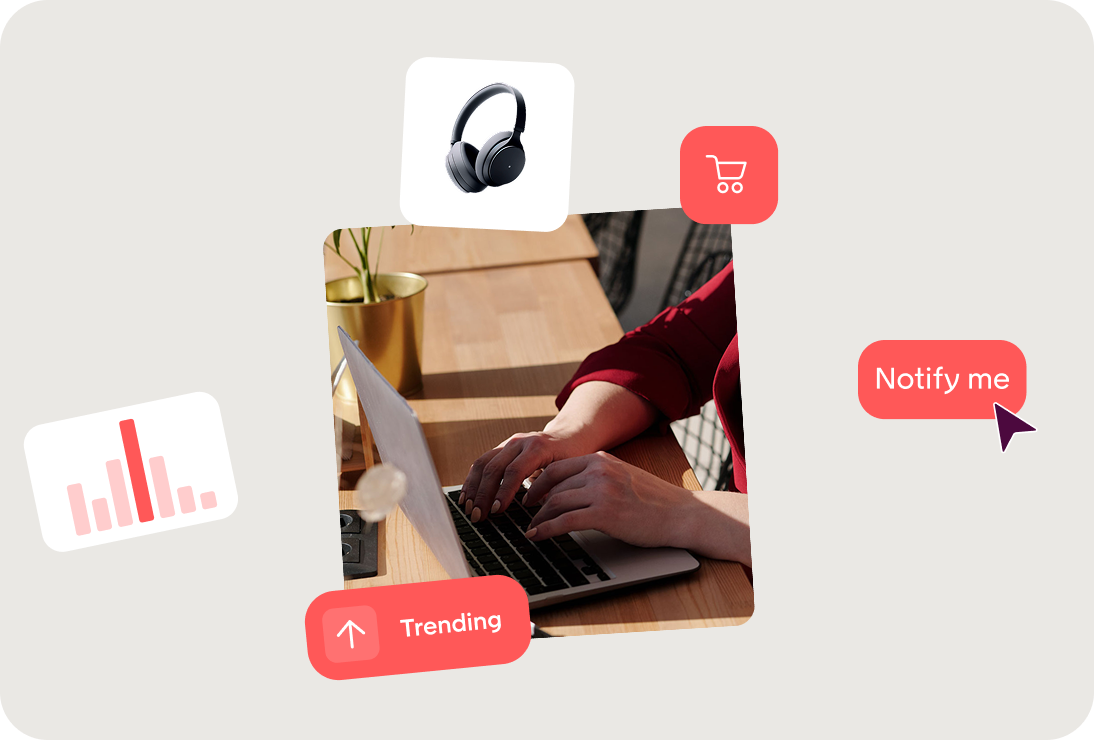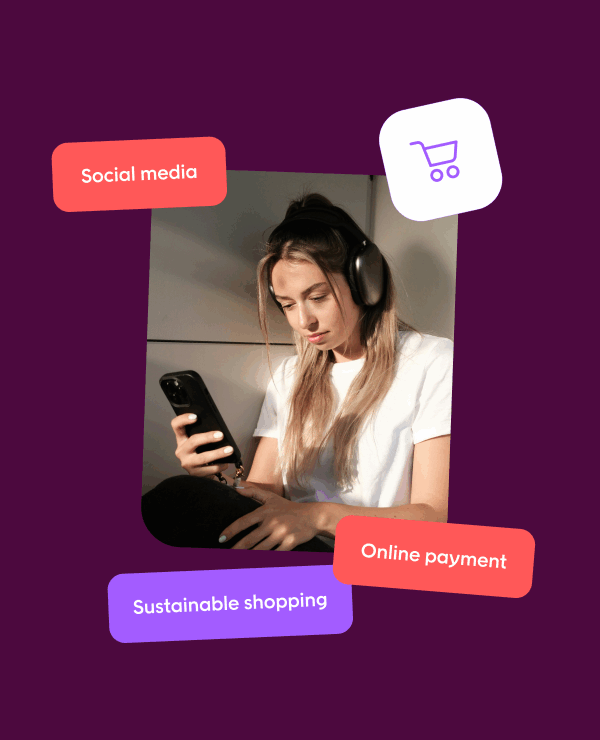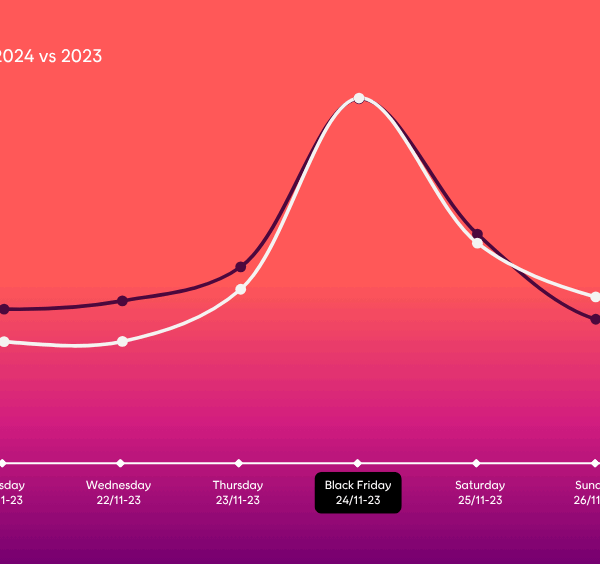TL;DR
- The global ecommerce market continues to grow at double-digit rates, reshaping consumer expectations worldwide.
- Mobile commerce is projected to account for the majority of online sales, making seamless mobile shopping experiences essential.
- Artificial intelligence and personalized shopping experiences are no longer optional; they drive customer loyalty and operational efficiency.
- Social commerce, video content, and conversational commerce are turning discovery into instant purchases.
- Sustainability and flexible payment options are fast becoming deciding factors for today’s online shoppers.
Every click is a test for your online store. If the shopping experience feels slow or irrelevant, today’s e-commerce shoppers move on without hesitation.
They expect speed, personalization, and seamless journeys across devices.
The e-commerce businesses that adapt to these demands will unlock consistent growth.
Those that don’t will struggle to keep pace in a global e-commerce market defined by rapid change.
The unstoppable growth of e-commerce
E-commerce is no longer an add-on to retail. It is now a major driver of the global e-commerce market, shaping how billions of people shop online, spend, and connect with brands.
The global market expands
Worldwide online sales are projected to reach 6.86 trillion dollars by 2025, up from 5.8 trillion in 2023. E-commerce continues to outpace brick-and-mortar store sales, proving that the e-commerce industry now drives a significant share of total retail sales.
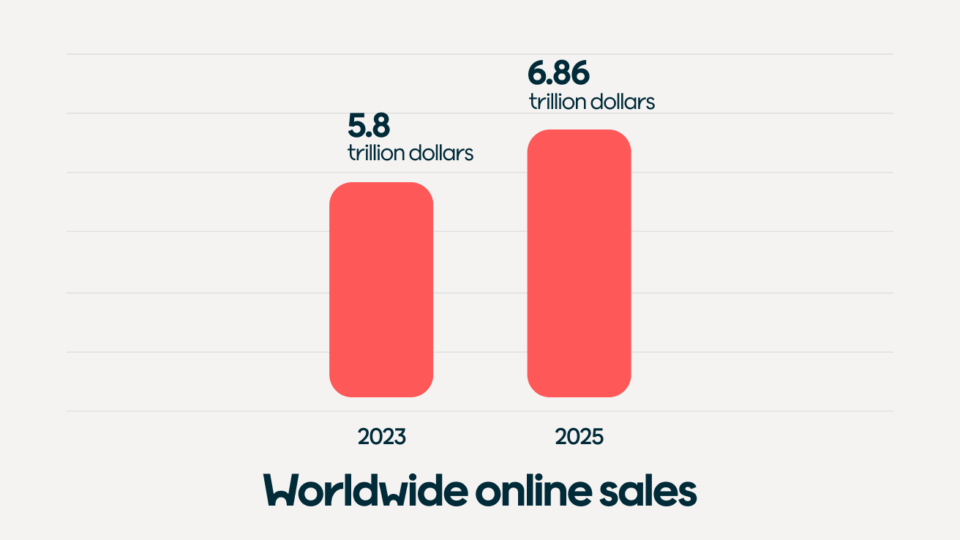
Tip: Treat your online store as a core revenue engine. Successful e-commerce businesses design platforms that support operational efficiency, seamless customer experiences, and consistent revenue streams.
Who today’s online shoppers are
There are now over 2.7 billion online shoppers worldwide. Today’s online shoppers range from seniors buying groceries online to Gen Z consumers who demand hyper-personalized shopping experiences across mobile devices and social channels.
Voyado in action: By Malene Birger boosted full-price shoppers by 109 percent with personalized onboarding, showing how online retailers can meet customer expectations with smarter use of customer data.
Tip: Segment audiences by age, interest, and preferred channel. E-commerce platforms that adapt to customer demands are better positioned for loyalty and future growth.
Categories driving online sales
Consumer electronics, apparel, and home goods dominate the e-commerce landscape. Groceries and pharmacy products are also growing fast as consumer demand for convenience rises.
Voyado in action: Samsøe Samsøe used loyalty data and product recommendations to increase purchases by 24.6 percent. This reflects a new ecommerce trend: personalization drives sales across high-growth categories.
Tip: For categories like electronics or groceries, offer flexible payment options and reliable logistics. Online businesses that streamline the customer journey gain stronger customer loyalty.
Next, let’s explore what the future of e-commerce looks like.
What the future of e-commerce looks like
The next few years will be shaped by digital innovation, smarter business operations, and rising consumer expectations. Businesses that adapt quickly to these ecommerce trends will secure consistent revenue streams.
Gen Z and Millennials shape the e-commerce market
Gen Z and Millennials are today’s online shoppers with the strongest buying power. They drive commerce spending in global markets and abandon online businesses that fail to deliver personalized shopping experiences.
Voyado in action: JACK & JONES achieved a 33 percent higher average order value for loyalty members by meeting customer expectations with relevant offers.
Tip: Invest in mobile commerce and social shopping. Customers expect brands to be present across leading platforms where they already shop online.
Flexible payments, logistics, and customer experience
Future growth depends on how well online retailers simplify the shopping journey. Customers now expect multiple payment options, transparent logistics, and easy returns.
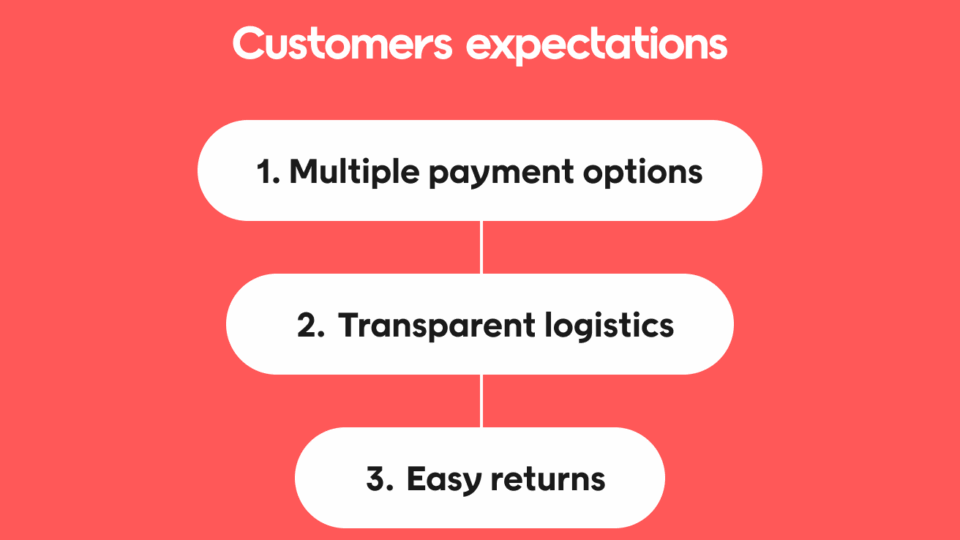
Voyado in action: Obs and Obs Bygg increased revenue from search by 4.5 percent, proving how seamless online shopping experiences connect product discovery with purchase.
Tip: Offer at least three payment methods on your e-commerce platforms. Pair this with clear delivery times and reliable returns to drive customer loyalty.
How businesses can prepare for future growth
Competition will intensify as more global consumers shop online. E-commerce businesses that combine operational efficiency with customer-centric marketing strategies will lead the e-commerce market.
Voyado in action: POWER A/S grew customer engagement by 300 percent by integrating loyalty programs into their business operations.
Tip: Audit inventory management and supply chain processes regularly. Align them with consumer behavior trends to support continued growth.
Next, we look at the technologies shaping this future.
The technologies changing the shopping journey
Digital innovation is transforming how global consumers purchase products. Artificial intelligence, mobile commerce, and social shopping are no longer optional. They define the future of online retail.
Artificial intelligence and personalization
AI recommendations and predictive analytics let online businesses anticipate customer behavior. Personalized shopping experiences are now a baseline, not a bonus.
Voyado in action: Nelly used AI-powered personalization to deliver seamless customer experiences, turning one-time shoppers into loyal customers.
Tip: Start with AI product recommendations to prove ROI. Expand to conversational commerce and predictive campaigns once results show.
Mobile commerce as the default channel
By 2025, 59 percent of online sales will come from mobile devices. For today’s online shoppers, mobile commerce is the default way to shop online.
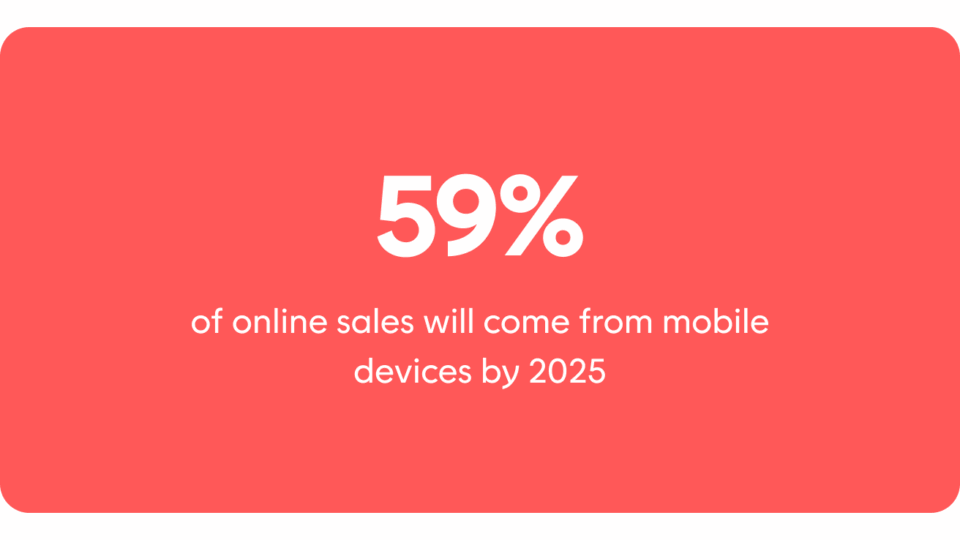
Tip: Test your mobile shopping journey on multiple devices each month. A poor online shopping experience on mobile means lost sales.
Social commerce and digital discovery
Social commerce is one of the fastest-growing ecommerce trends. Platforms like TikTok and Instagram now allow customers to discover and purchase products without leaving the app.
Voyado in action: Lakrids by Bülow boosted loyalty by combining storytelling with shoppable content, proving the power of social shopping.
Tip: Use shoppable posts to shorten the customer journey. Meet consumer expectations by allowing the purchase of products directly in-app.
AR, voice search, and chatbots
Augmented reality, voice search, and chatbots are reshaping the e-commerce experience. AR reduces returns, voice search supports hands-free shopping, and chatbots improve business operations by cutting service costs.
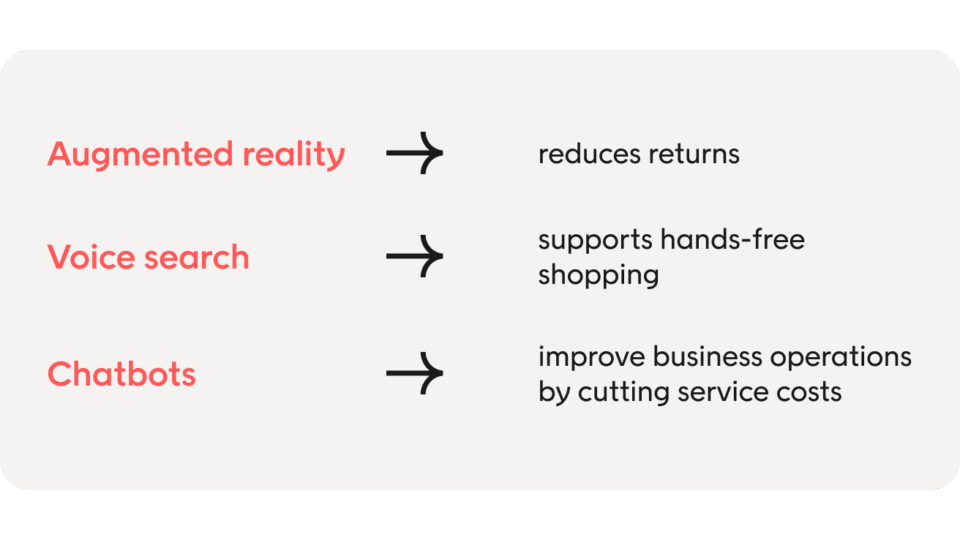
Tip: Select the technology that solves your biggest barrier. Use AR for hesitant buyers or chatbots to speed up customer service.
Convenience drives online sales, but it is no longer the only factor. Customers expect more from the e-commerce experience, and their values now play a central role in purchase decisions.
Meeting customer expectations beyond convenience
Today’s online shoppers want more than speed. They expect values, transparency, and trust from the e-commerce businesses they choose. Meeting these consumer demands is now as critical as price or product range.
Sustainability as a loyalty driver
Sustainability is shaping new e-commerce trends. Global consumers reward online retailers that act responsibly with packaging, delivery, and production. In fact, customers increasingly see sustainability as a deciding factor when they shop online.
Voyado insight: Our UK Retail Radar 2025 report shows that 73 percent of total retail sales come from customers engaged in loyalty and retention efforts. Sustainability messaging is becoming a core part of how leading platforms build customer loyalty.
Tip: Start small with recyclable packaging, greener delivery, or local sourcing. Promote these choices clearly in your online shopping experience to show customers that you align with their values.
Transparency and ethical supply chains
Transparency is no longer optional in the e-commerce landscape. Online shoppers want to know where products come from and whether supply chains are ethical. Retailers that share this information earn trust and repeat business.
Tip: Add simple but visible trust markers in your online store. A “responsibly sourced” tag or details about ethical production can make today’s online shoppers more confident in their purchase journey.
Turning values into business advantage
Values are now a competitive advantage in the global ecommerce market. Brands that act on sustainability, ethics, or social responsibility gain consistent revenue streams, even in crowded industries.
Voyado in action: Björn Borg enhanced engagement by showcasing authentic ratings and reviews, proving that user-generated content builds trust when aligned with values.
Tip: Use your marketing strategies to highlight sustainable practices and customer experiences. E-commerce platforms that reflect consumer behavior and expectations stand out in a competitive e-commerce industry.
But technology and trends alone aren’t enough. To thrive in the global ecommerce market, online retailers need clear priorities and a roadmap for action.
The path forward for e-commerce businesses
The e-commerce industry is growing fast, and today’s online shoppers expect more than just convenience. To keep up, e-commerce businesses need to focus on experience, efficiency, and values.
Here’s a quick checklist to prepare for future growth:
- Invest in personalized shopping experiences powered by artificial intelligence
- Optimize your online shopping experience for mobile commerce
- Offer flexible payment options and transparent delivery times
- Streamline business operations with better inventory management and supply chain efficiency
- Highlight sustainability and transparency to build customer loyalty
- Use social commerce and user-generated content to connect with global consumers
Brands that act on these steps will capture consistent revenue streams, stand out in the global ecommerce market, and secure long-term loyalty.
Voyado helps online retailers turn customer data into seamless customer experiences across every channel. Ready to take the next step? Book a demo today!
FAQs
What are the biggest e-commerce trends in 2025?
Key e-commerce trends include mobile commerce as the default channel, social shopping through platforms like TikTok and Instagram, hyper-personalized shopping experiences powered by artificial intelligence, and sustainable practices that build customer loyalty.
How are today’s online shoppers different from previous years?
Today’s online shoppers expect seamless customer experiences across every channel. They shop online more often, rely on mobile devices for purchases, and demand flexible payment options and transparent logistics from online retailers.
Why is customer data important for e-commerce businesses?
Customer data enables personalized shopping experiences, targeted marketing strategies, and smarter business operations. E-commerce platforms that use customer data effectively see significant growth in loyalty and consistent revenue streams.
What technologies are shaping the future of the e-commerce market?
Artificial intelligence, augmented reality, conversational commerce, and voice search are reshaping the e-commerce landscape. These tools improve the online shopping experience, reduce friction in the customer journey, and help e-commerce businesses stay competitive.
How can online retailers stay competitive in global markets?
To succeed in the global ecommerce market, online retailers must invest in digital innovation, improve operational efficiency in supply chain and inventory management, and create seamless, value-driven customer experiences that meet consumer expectations.

